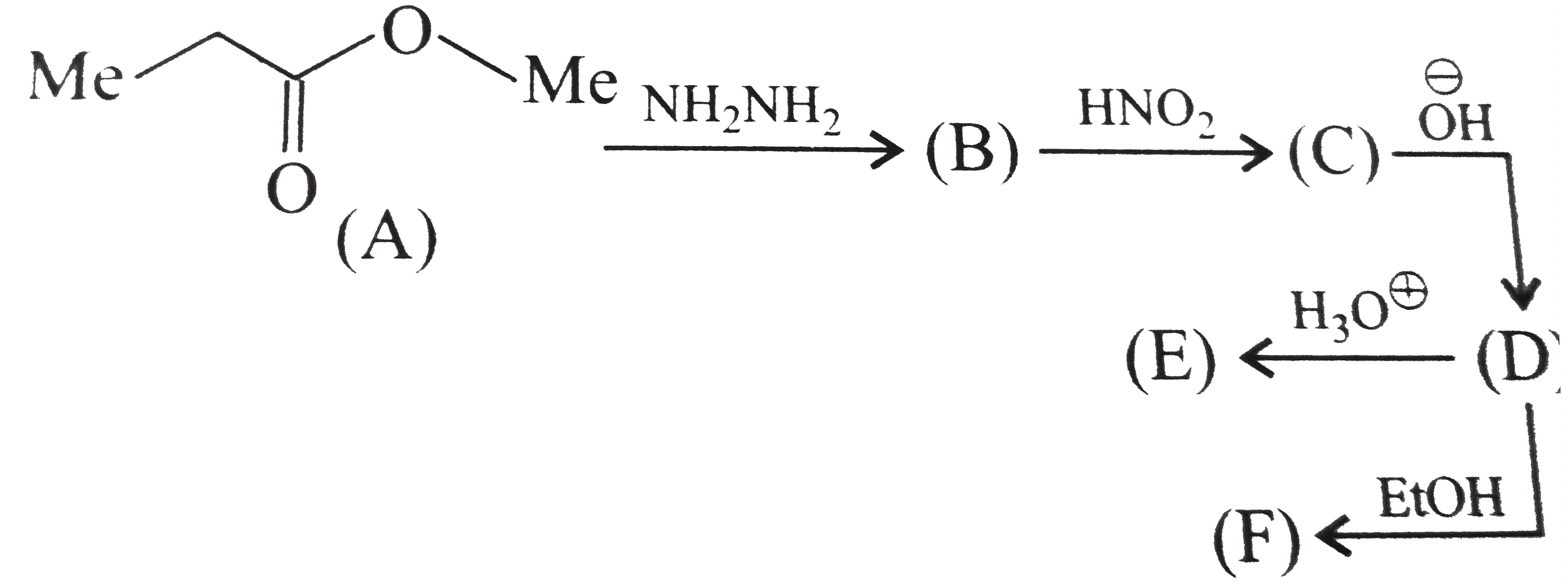Complete the following reactions :
(a) C6H6+Ac2OAlCl3−−→(A)1.Br2/ӨOH−−−−−−→2.H3O⊕(B)
(b)
( c) 
(d) 
( e) 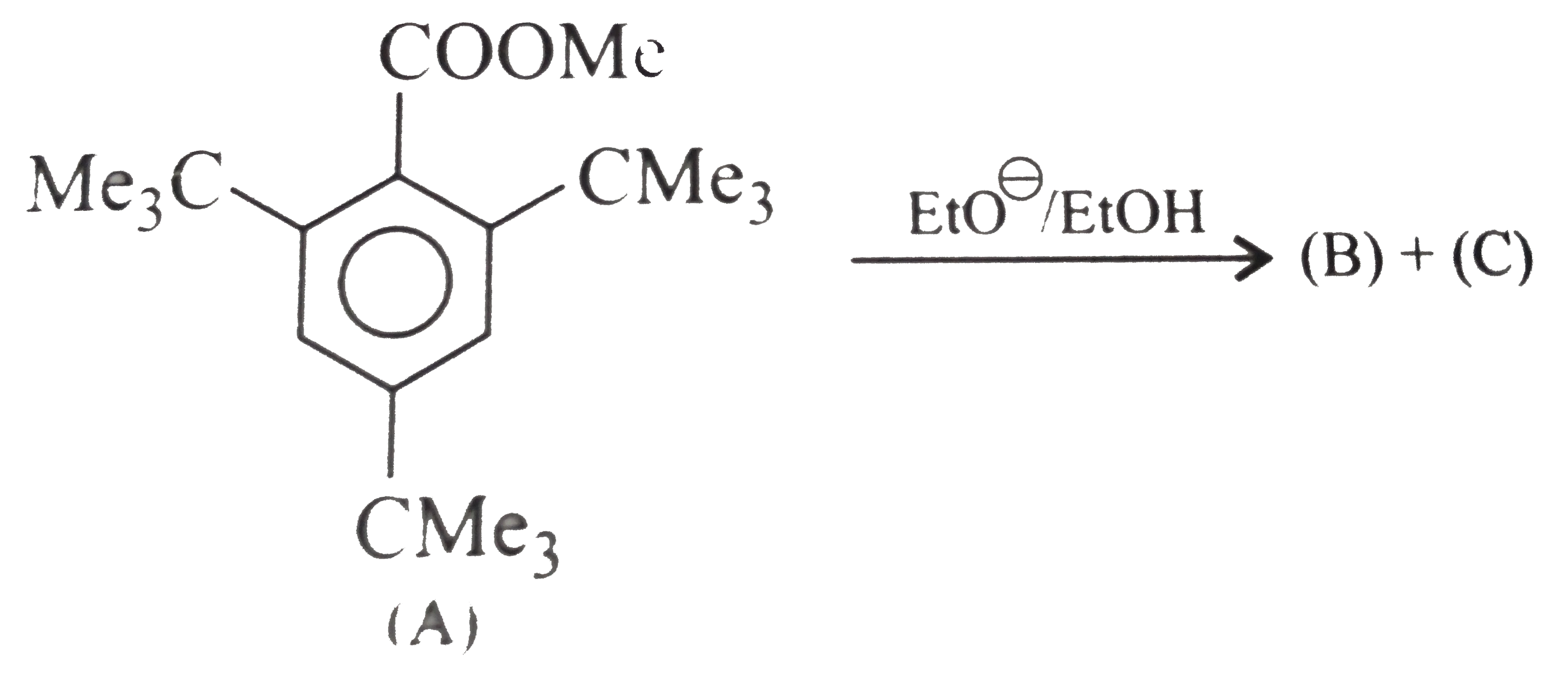
(f) 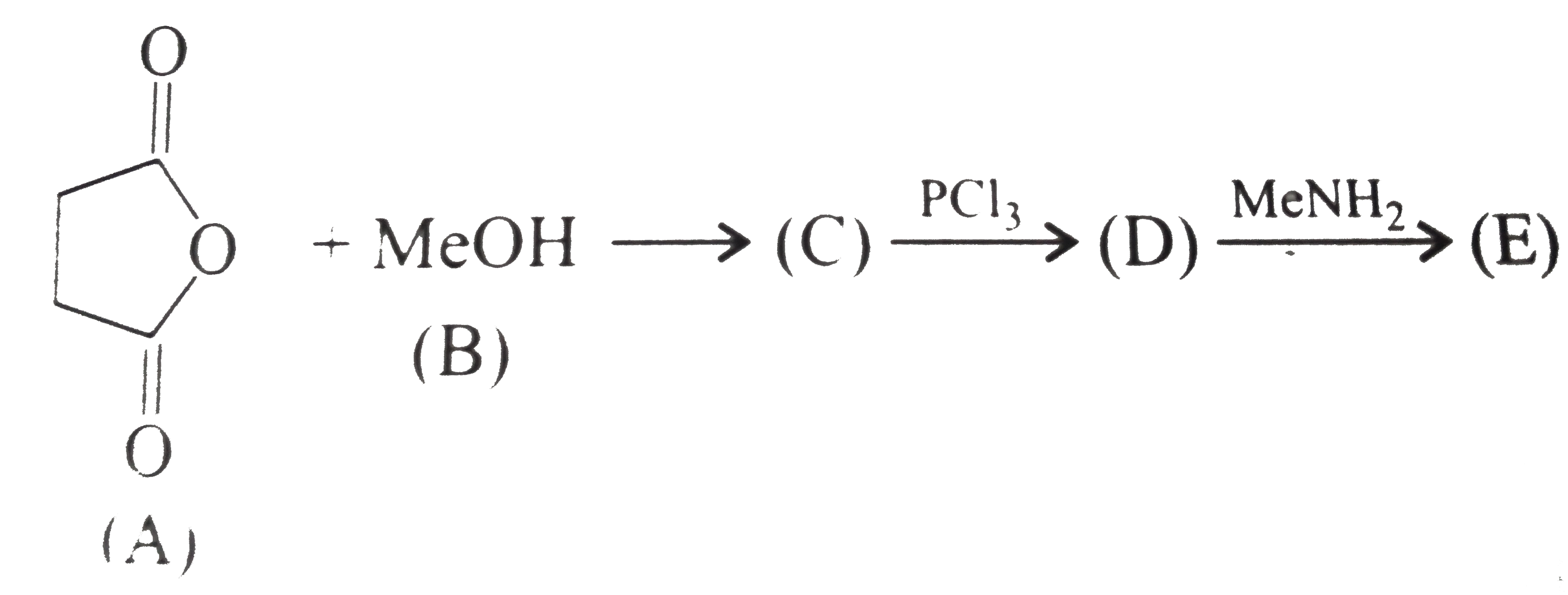
(g)  .
.
(a) 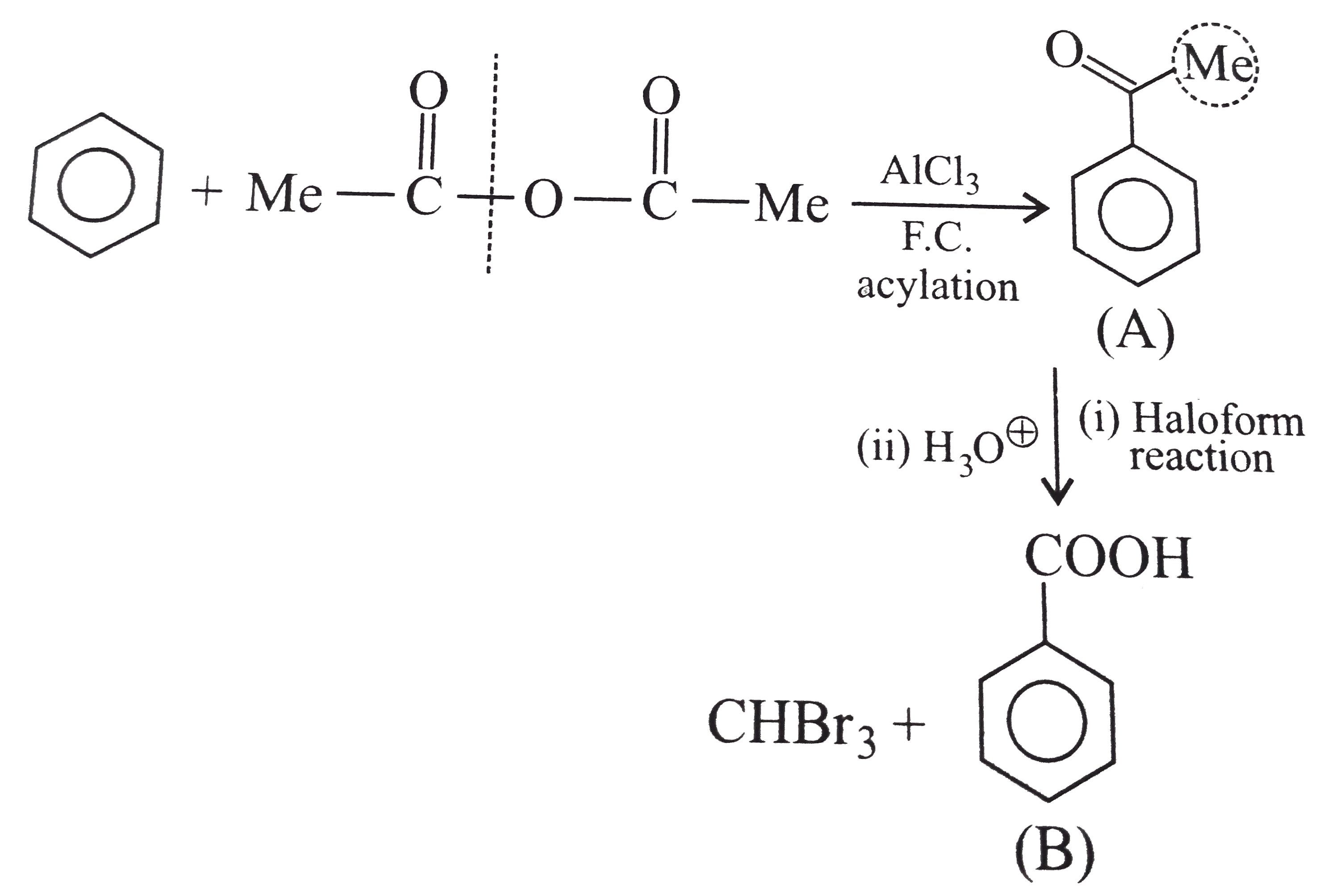
(b) 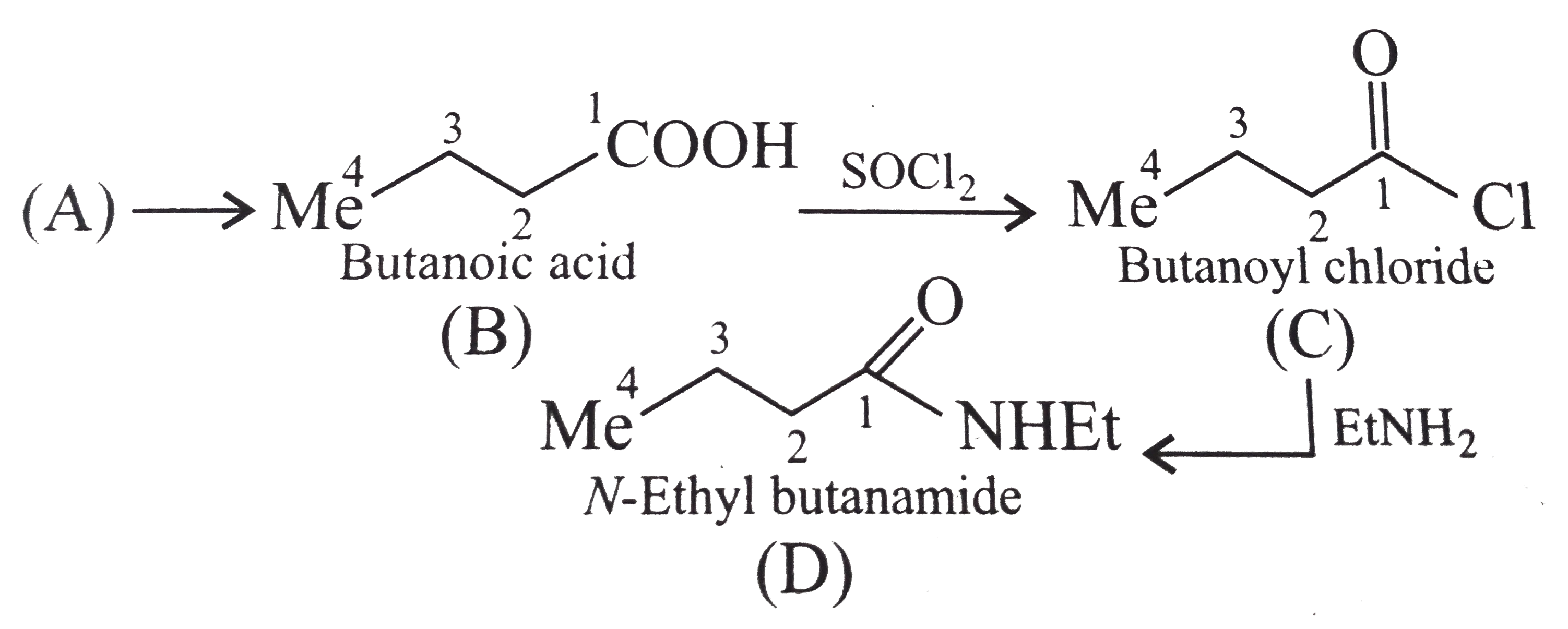
( c) 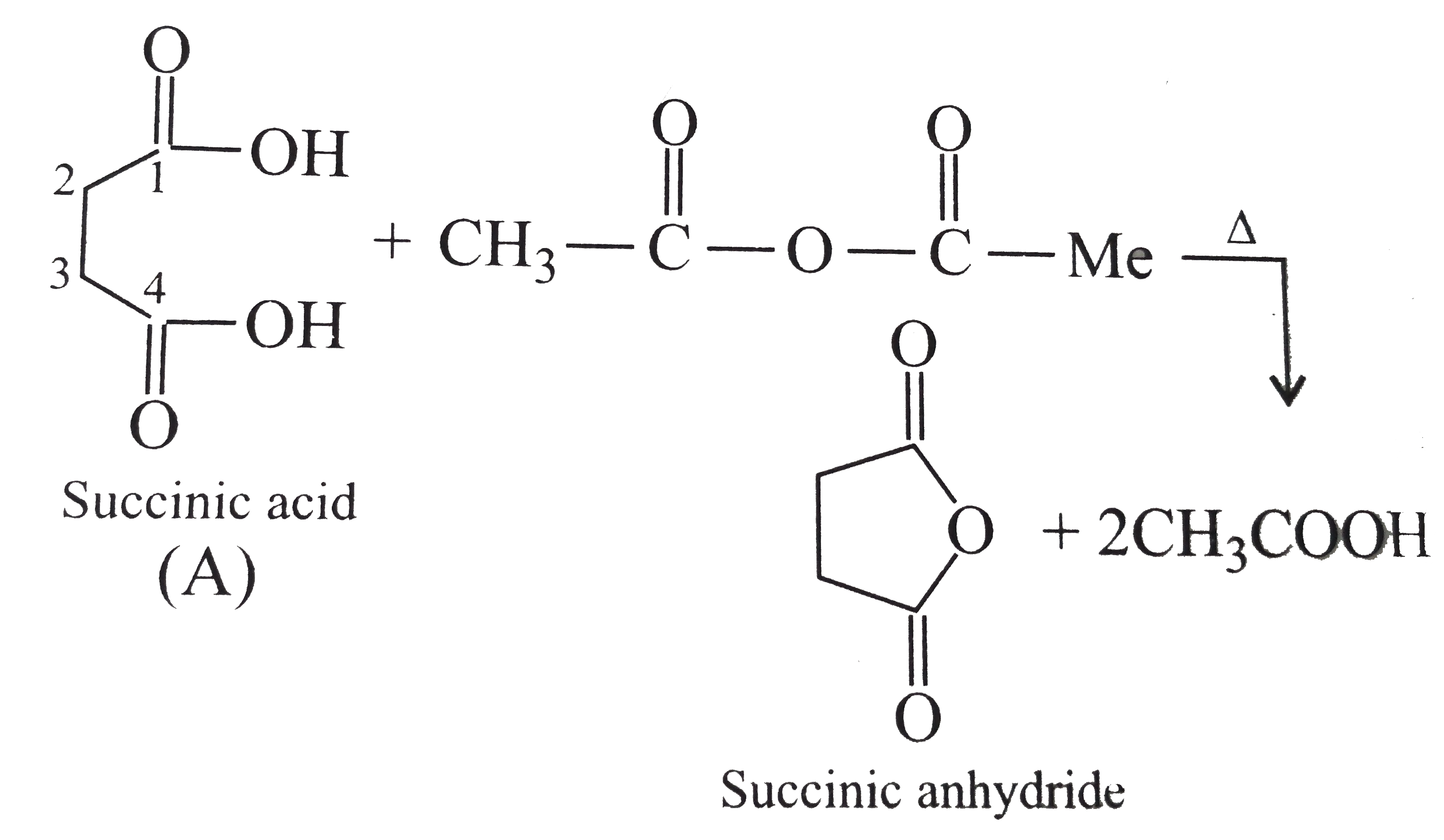
(d) 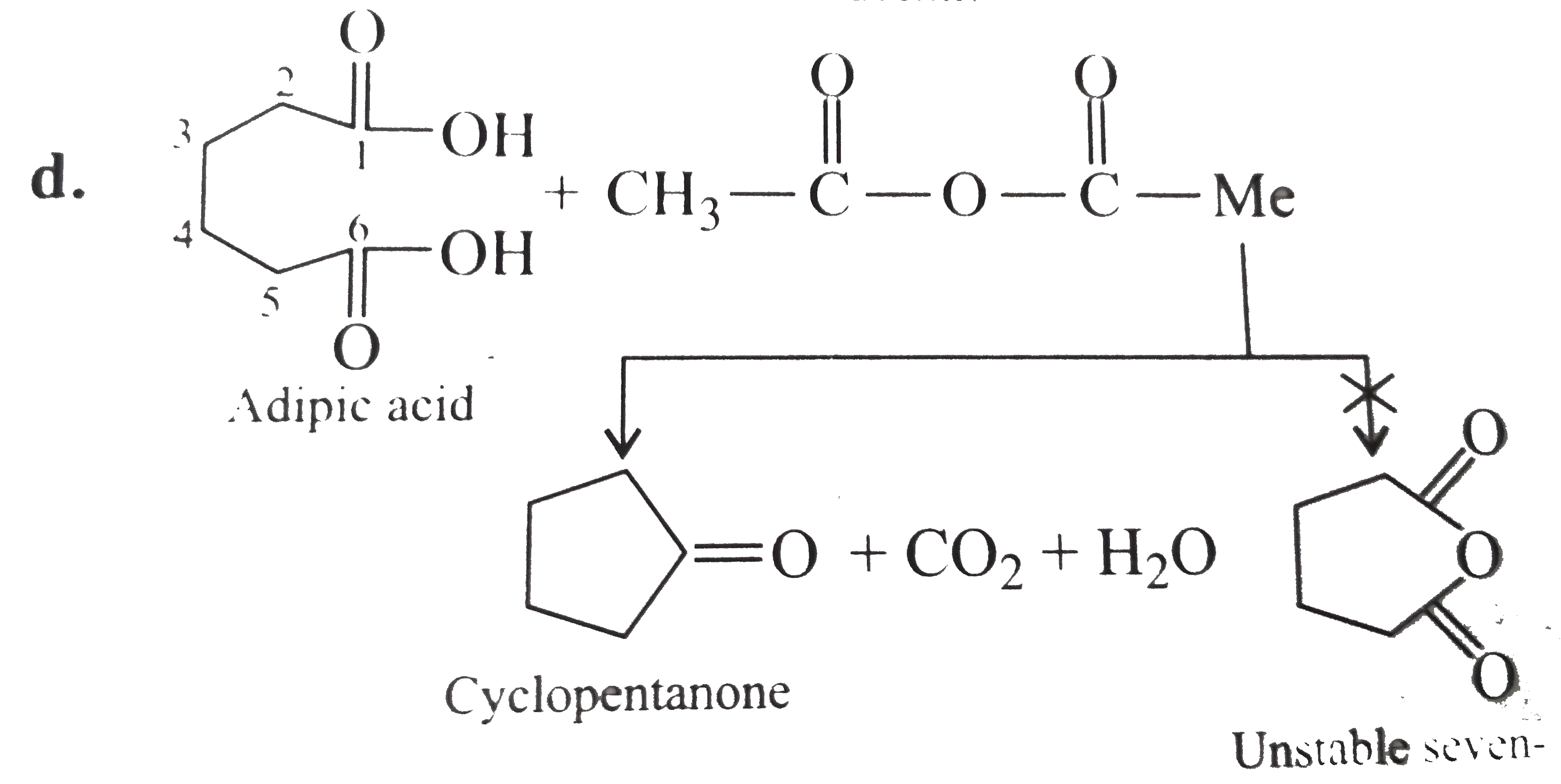
( e) It should be the example of base-induced transesterification. But the (C=O) group is sterically hindered, so the nucleophile EtOӨ attacks at the MeC atom giving 2,4,6−tri−tert−butyl benzoate anion and the ether MeOEt.
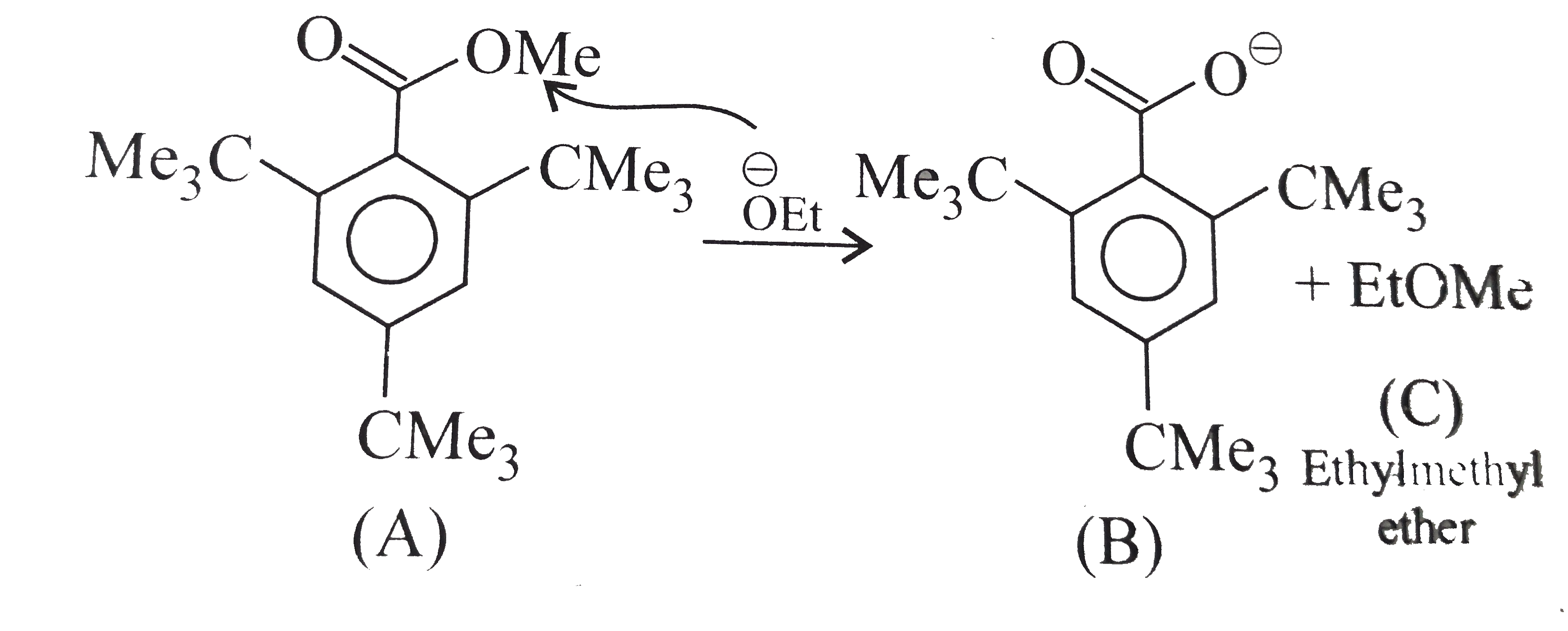
(f) 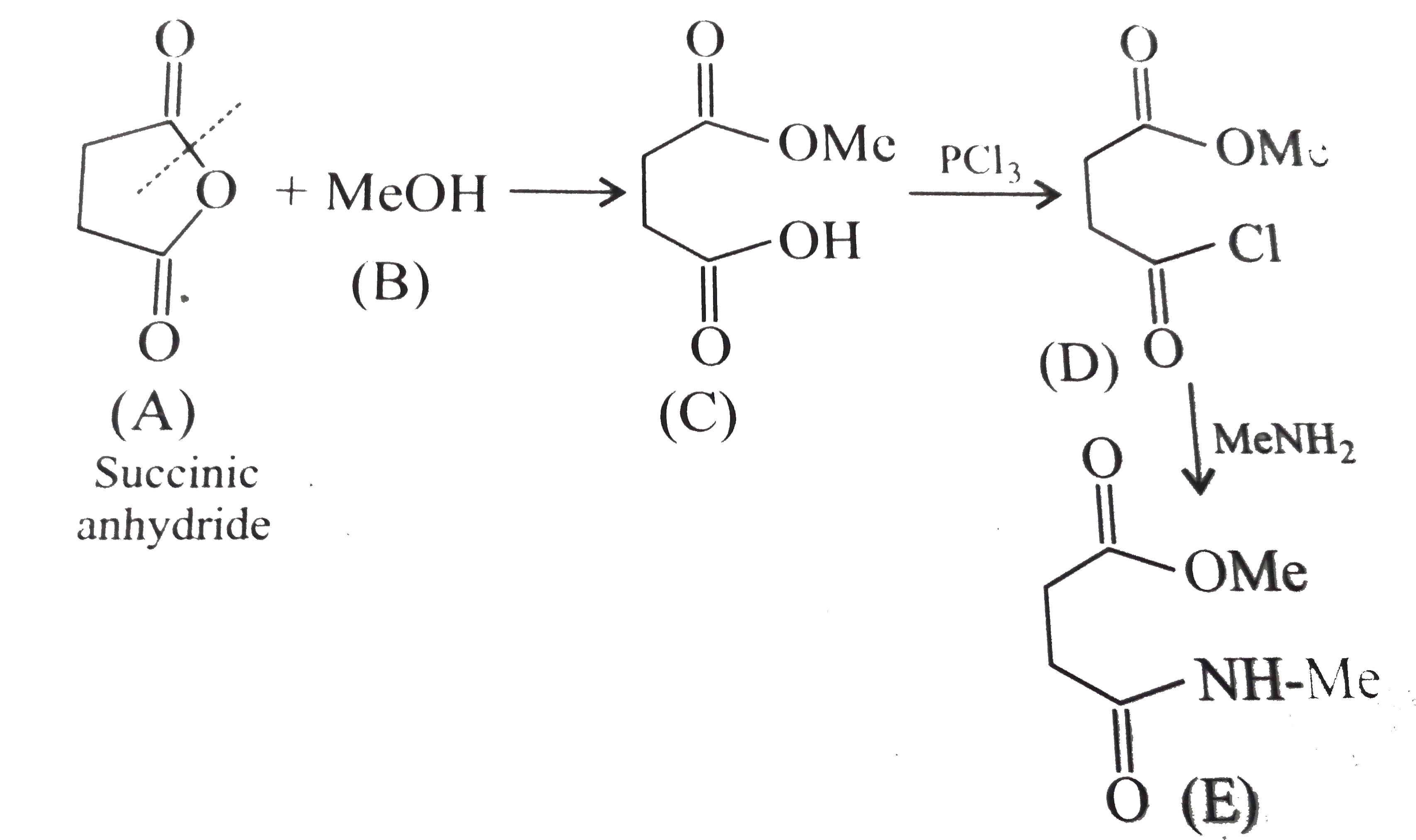
(g) 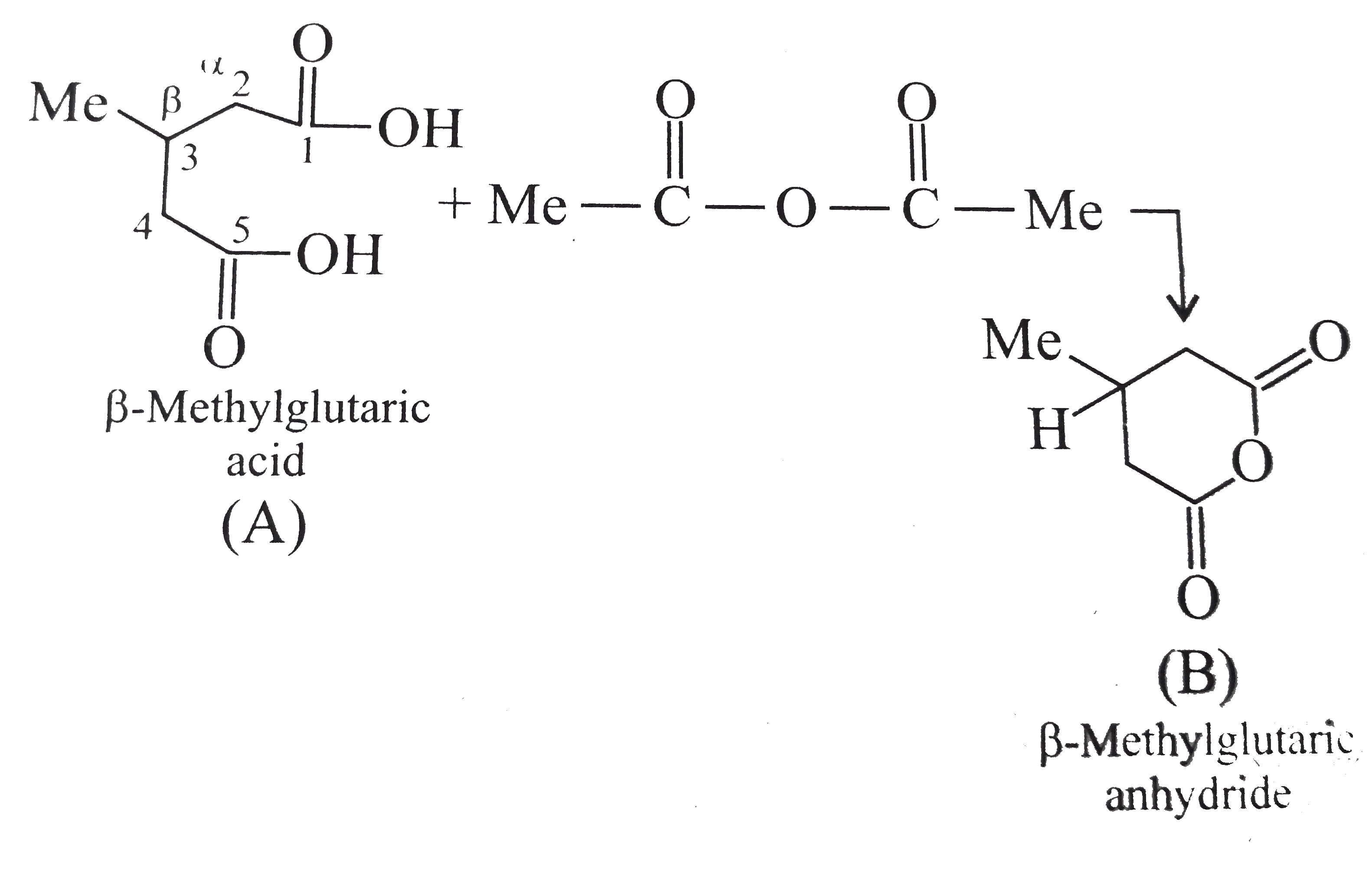 .
.
Topper's Solved these Questions
- CARBOXYLIC ACIDS AND THEIR DERIVATIVESBOOK - CENGAGE CHEMISTRYCHAPTER - CARBOXYLIC ACIDS AND THEIR DERIVATIVESEXERCISE - Solved Examples
17 Videos
- CARBOXYLIC ACIDS AND THEIR DERIVATIVESBOOK - CENGAGE CHEMISTRYCHAPTER - CARBOXYLIC ACIDS AND THEIR DERIVATIVESEXERCISE - Exercises (Subjective)
19 Videos
- BIOMOLECULES, POLYMERS AND CHEMISTRY IN EVERYDAY LIFEBOOK - CENGAGE CHEMISTRYCHAPTER - BIOMOLECULES, POLYMERS AND CHEMISTRY IN EVERYDAY LIFEEXERCISE - QUESTION BANK
8 Videos
- CHEMICAL KINETICSBOOK - CENGAGE CHEMISTRYCHAPTER - CHEMICAL KINETICSEXERCISE - Archives Subjective
23 Videos
Similar Questions
Knowledge Check
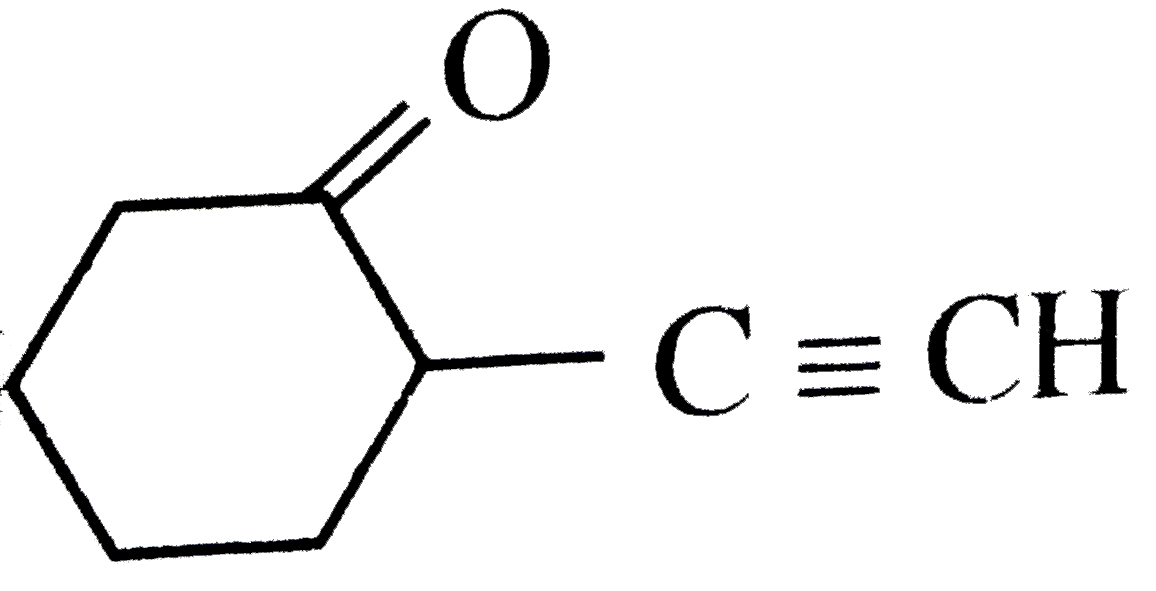
∣HgSO4/H2SO4−−−−−−−−−−→(A)2molofMeMgBr/H3O⊕−−−−−−−−−−−−−−→(B). (B) is :A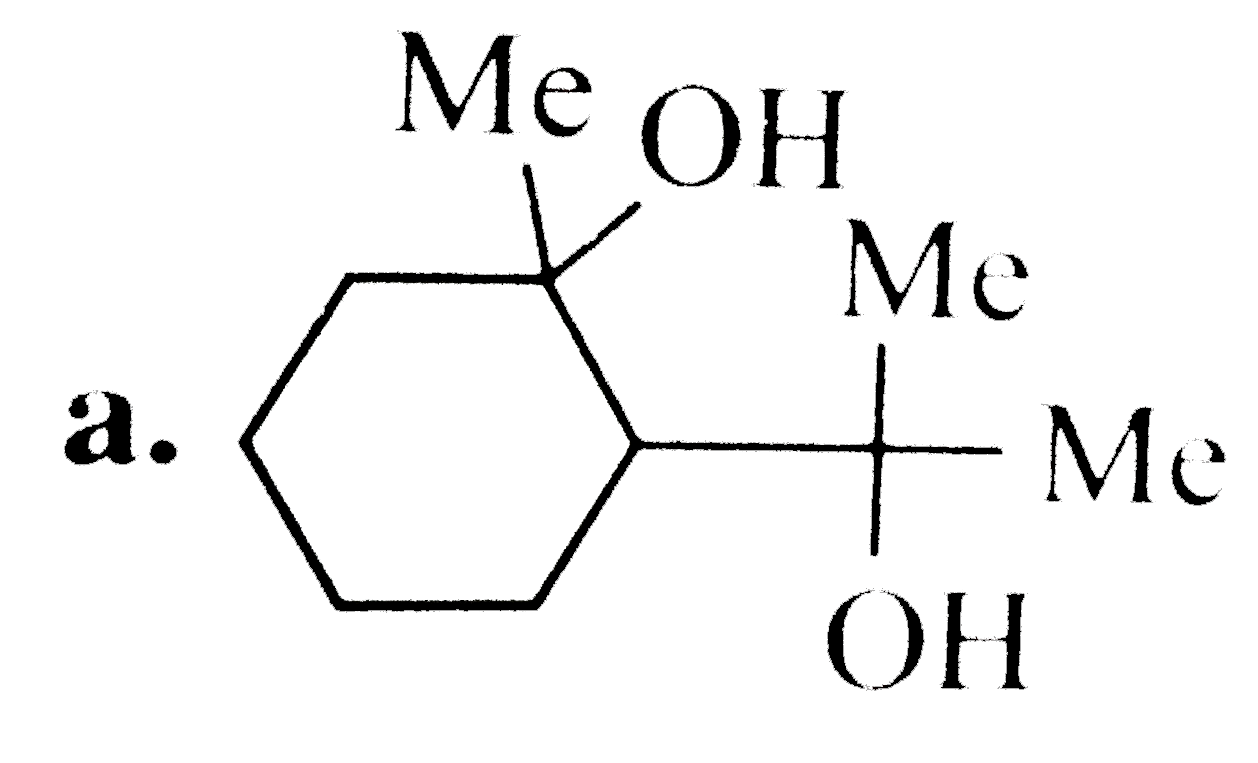 B
B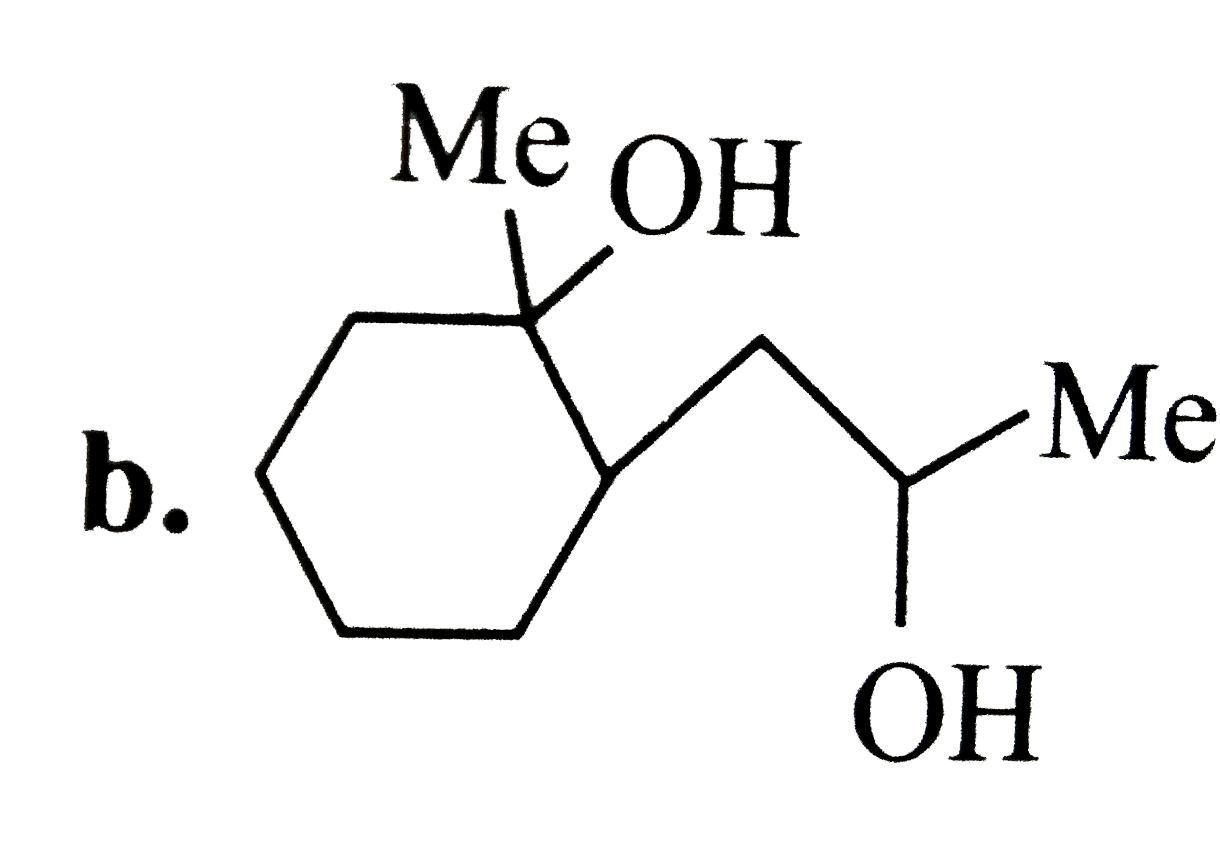 C
C D
D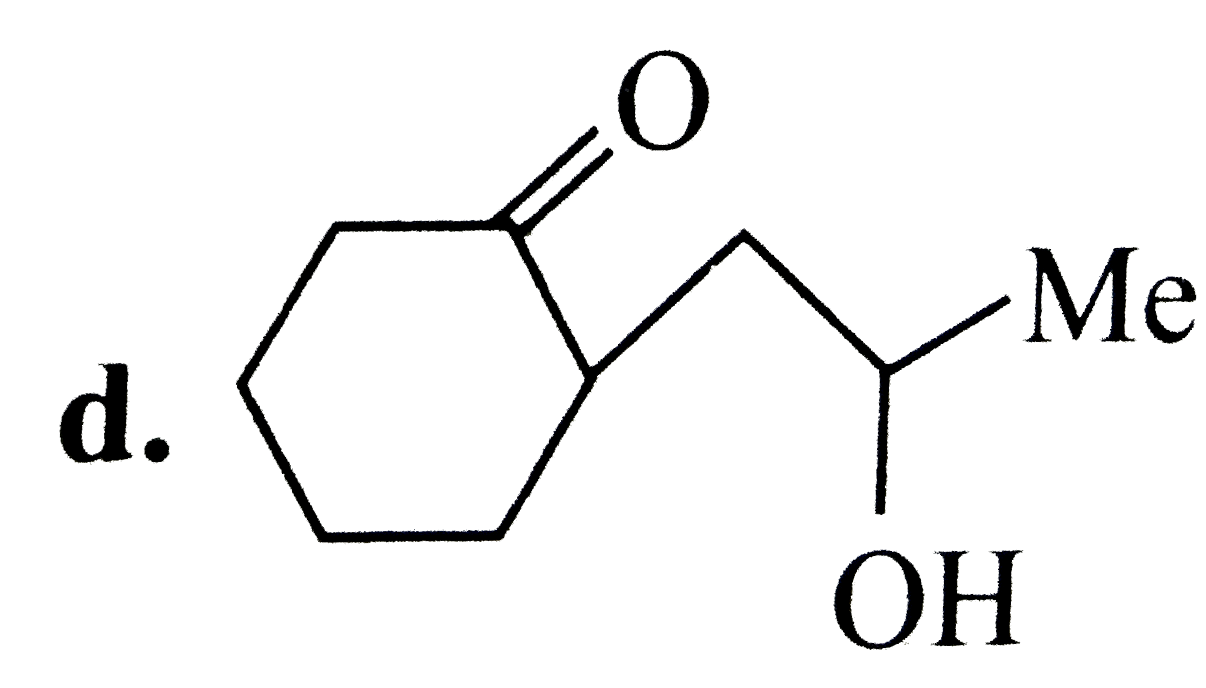
Cl−OH∣C−OEtPhMgBr(excess)−−−−−−−−−−→H⊕3O Product :
APh−OH∣C∣Ph−PhBPh−O∣∣C−ClCPh−O∣∣C−OEtDPh−O∣∣C−Ph
(a)
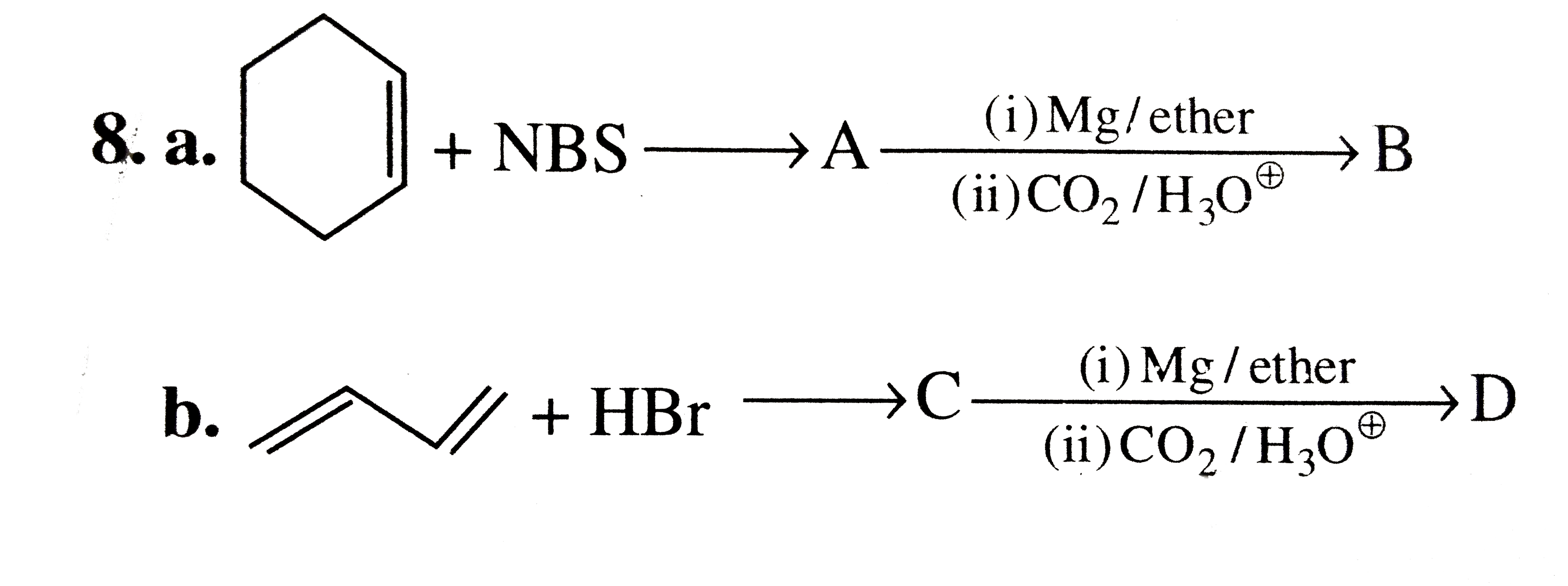
(b)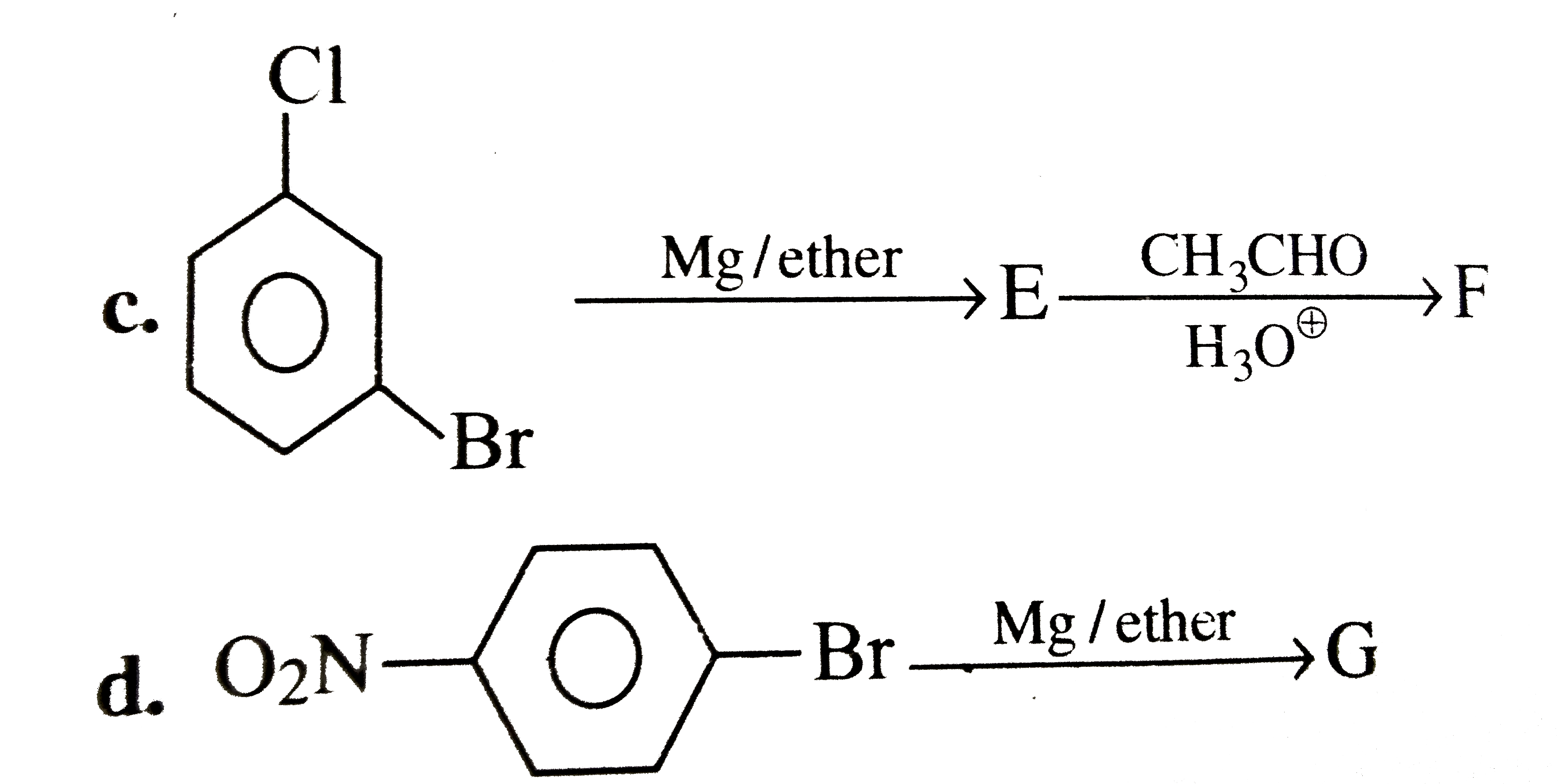
( e) PhMgBrO2−−−→H3O⊕?
(f) Phenol+RMgI→?.
View SolutionIdentify the product in following reaction
CH3−CH3∣C=C∣H−CH3D2O/D⊕−−−−−→
View SolutionComplete the following reactions:
a. Benzene(A) Ac2O−−−−→+AICI3 (B) (i)MeMgBr−−−−−−−→(ii)H3O(+) (C) Conc.H2SO4 (D) 1.BH3/THF−−−−−−−−−−→2.H2O2/O(−)H (E)
b. MeCH2Br(A) alc.−−→KOH (B) Br2−−→ (C) 2NaNH2−−−−→ (D) RMgBr−−−−→1mol RH + (E) 1.Ace→≠−−−−−−→2.H3O(+) (F)
c.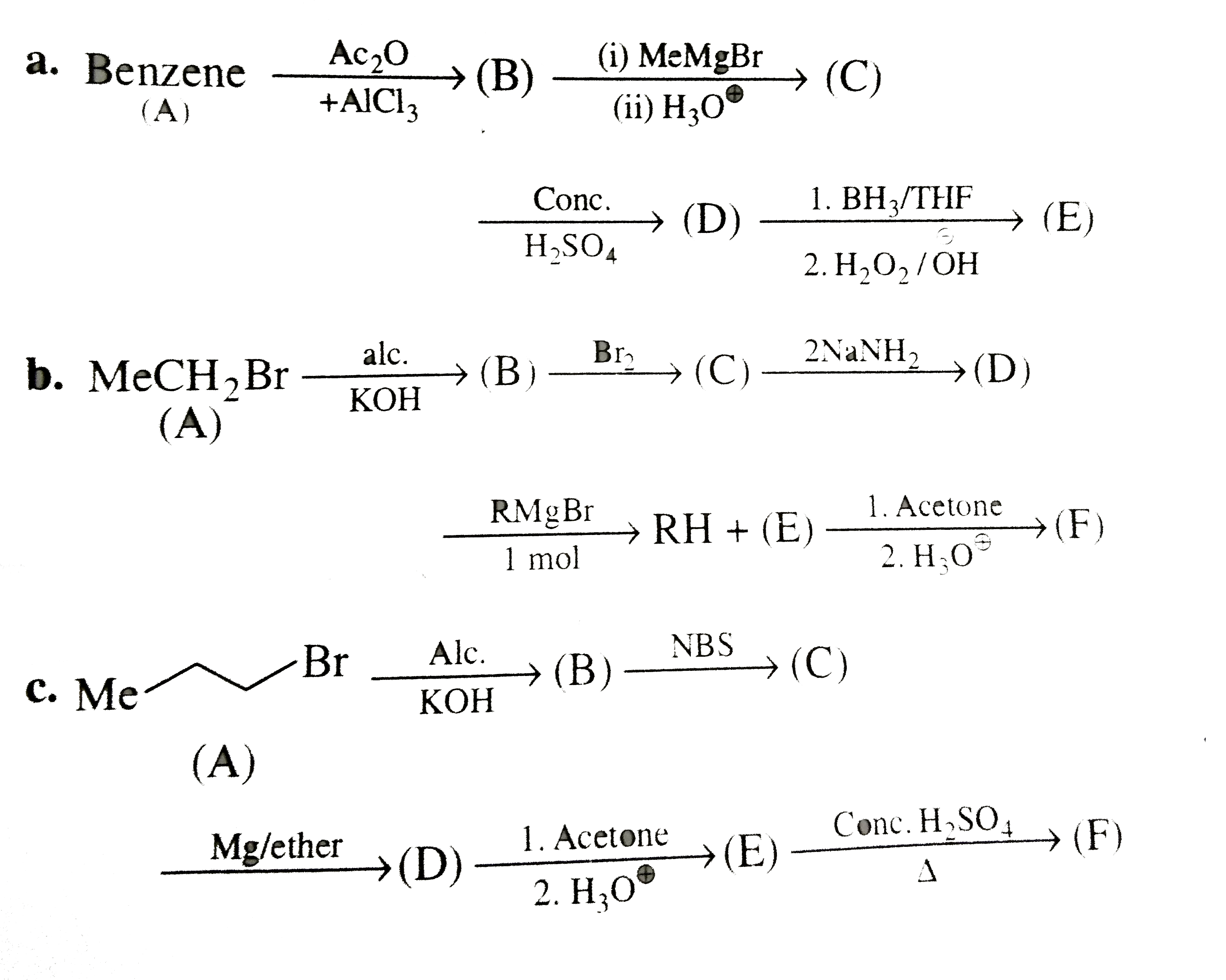 A1c.−−→KOH (B) NBS−−→ (C)
A1c.−−→KOH (B) NBS−−→ (C)
Mg..ether−−−−−−→ (D) 1.Acetone−−−−−−→2.H3O(+) (E) conc.H2SO4−−−−−−−→Δ (F)
View Solution(a) Optically active compound (A) with a pleasant smell has a saponification equivalent (S.E)=186. If shows the following reaction.
(i) (A)Br2−−→CCl4NO reaction
(ii) (A)−−−→H3O⊕(B)and(C)Soluble inNaOH
Both (B) and (C) are chiral.
(iii) (C)I2+ӨOH−−−−→ Positive test
(iv) (C)Conc.−−−→H2SO4(D) (No diastereomers)
(v) Ag salt of (B)Br2−−→(±)(E)
(vi) (C)TsCl−−→NaBr−−→(E)(Chiral)
Identify (A) to (E)
(b) How do the structures of (A) to (E) change if
(i) (D) exists as diasteremers.
(ii) (C) gives negative iodoform test.
View SolutionComplete the following:
CH3−C≡C−CH=CH−CH3NBS/hv−−−−−→(A)H2/Pd−BaSO4−−−−−−−−−→(B)(i)O3−−−−−−−→(ii)H2O/Zn(C)+(D)+(E)
View SolutionComplete the following reaction:
o−HOOC(A)−C6H4−CH2−PhSOCl2−−−→(B)
Anhyd−−−−−→AlCl3(C)Zn+Hg−−−−−−−→+HCl(D)SorSe−−−−−→600∘C(E)
View Solution

_S01_429_Q01.png)
_S01_429_Q02.png)



